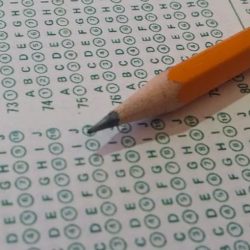Not a single prospective student has visited campus officially since last March, but that hasn’t deterred tens of thousands of them from applying for admission to UW–Madison.
Despite unprecedented disruptions from the pandemic, the 2020 freshman class was the second largest in the university’s history, with 7,306 students enrolling in the fall. UW–Madison received a record number of applications — 45,941, up 4.6 percent from 2019.
The university expects to meet its previously established enrollment targets for the upcoming year. That includes international students, who, despite facing significant uncertainty and travel restrictions, continued to apply to UW–Madison in steady numbers.
“We are in our fifth and final year of carefully planned growth,” says André Phillips, director of admissions and recruitment.
The university has engaged prospective students through virtual campus tours and other live programming, including information sessions, school and college recruitment fairs, and multicultural panels. Admissions counselors have also been visiting high schools virtually.
The most common question the university has fielded from prospective students relates to ACT and SAT testing. Given the students’ limited access to testing, the UW Board of Regents approved a plan to make the submission of standardized test scores optional through at least spring 2023. (UW–Madison will assess how the new policy affects the composition of future classes and could extend it.)
Otherwise, the university has kept its holistic application review process in place. This year, it added an optional prompt for prospective students to address how the pandemic has affected them.
UW–Madison has long asked applicants to write two short essays about topics that interest them or experiences that have influenced them. Given the historic events of the past year — the pandemic, the political division, the social movements — the students’ essays may take on more meaning than ever before.
“Our reading process is designed to understand the challenges, aspirations, talents, and hopes of each student,” Phillips says. “We are excited that many of these students will make educational choices informed by growing up in these transformational times.”
Published in the Spring 2021 issue




Comments
No comments posted yet.